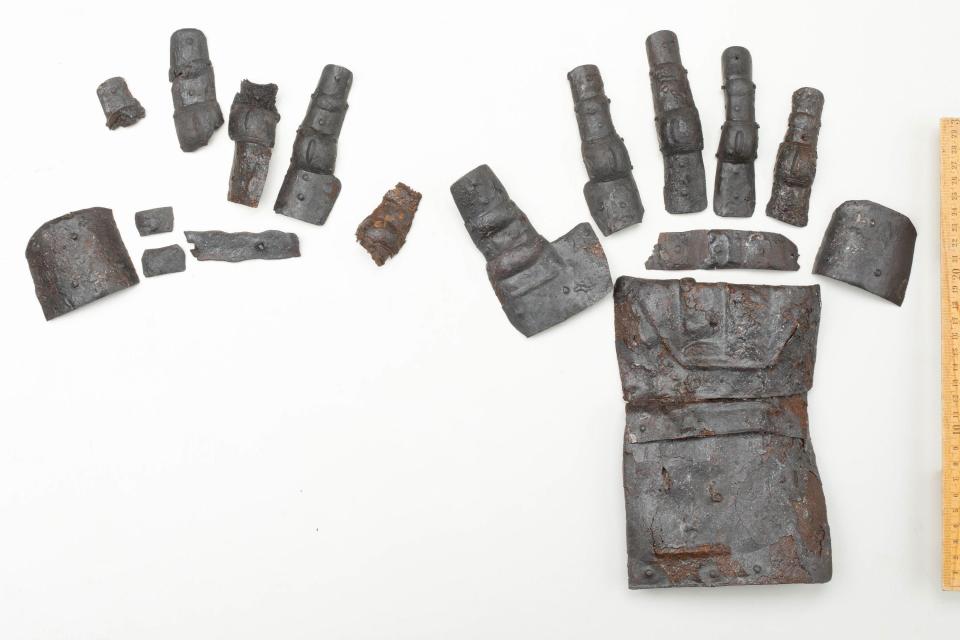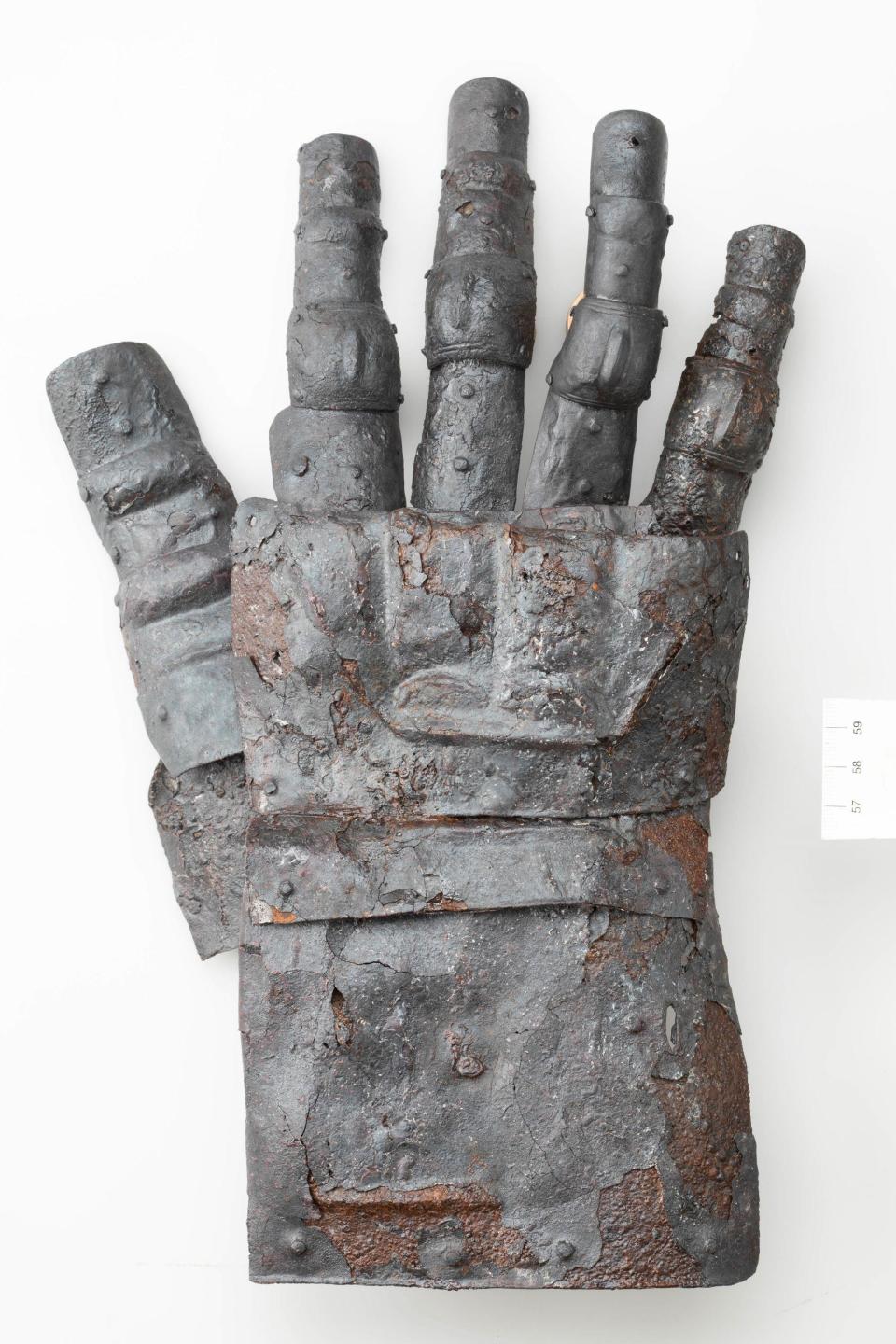Archaeologists unearth rare 14th-century armor near castle
Archaeologists in Switzerland recently made an unusual discovery while excavating the land around a medieval castle near the German border. The crews unearthed a well-preserved gauntlet that experts believe was forged during the 14th century, which would be unprecedented, officials said in an announcement that described the armor as a "sensational find."
"At first, Lorena Burkhardt hardly dared to voice her suspicions: This is a sensation in archeology!" reads a translated post shared on Facebook earlier this month by the canton of Zürich. It accompanies a video where Burkhardt, an archeologist leading the excavation, discusses the ancient artifact.

"Never before has such a well-preserved and complete gauntlet from the 14th century appeared in Switzerland," the post continues. "Who did the gauntlet belong to? Was it newly made in the Kyburg forge or already worn in battle? Cantonal archeology will now investigate such questions."
Gauntlets were armored gloves typically used by European soldiers and knights beginning in the 11th century, but finding one that dates back further than the 15th century is "extremely rare," according to Zürich officials.
This gauntlet was discovered during an excavation near Kyburg Castle, which is about 20 miles northeast of Zürich and in the modern era serves as a Swiss heritage site and museum. Archaeologists initially found a medieval weaving cellar that burnned down during the 14th century, officials said.
A collection of "over 50 extremely well-preserved" iron objects was also discovered in the area, which suggests that forging likely happened close by. The objects included a hammer, tweezers, pliers, keys, knives and bullet points, in addition to pieces of a gauntlet of armor that were "completely preserved," to the point that the glove's design details remained discernible after centuries. Fragments of the gauntlet's counterpart, for the other hand, were found too.
"In detail, it is a four-fold finger glove on the right hand, in which the individual iron plates are placed on top of each other like scales and connected to each other with rivets on the sides," the announcement says. "The individual components of the glove were attached to the inside with additional rivets on a leather or textile carrier material, which in turn was sewn onto a textile finger glove."
Officials noted that the armor's condition and the rarity of such a find in Switzerland leaves a number of unanswered questions about how it got to Kyburg and who it may have belonged to. Five other gauntlets that experts believe were forged around the same time as this one have been unearthed before in other parts of the country, although none were found in such good shape.
A copy of the gauntlet will be put on display permanently at Kyburg Castle, alongside a reconstructed version of the armored glove to show what it may have originally looked like. Visitors will be able to see it on exhibition at the castle starting March 29. They will have to wait a bit longer to see the true original, which is set to be shown at Kyburg only temporarily, for three weeks this fall starting on European Heritage Day, which is Sept. 7.

Michigan Gov. Gretchen Whitmer: Do not assume "about what the next election is going to bring"
Bishop Gene Robinson: "God called me out of the closet"
How Ozempic, other weight-loss drugs are "changing medicine"

